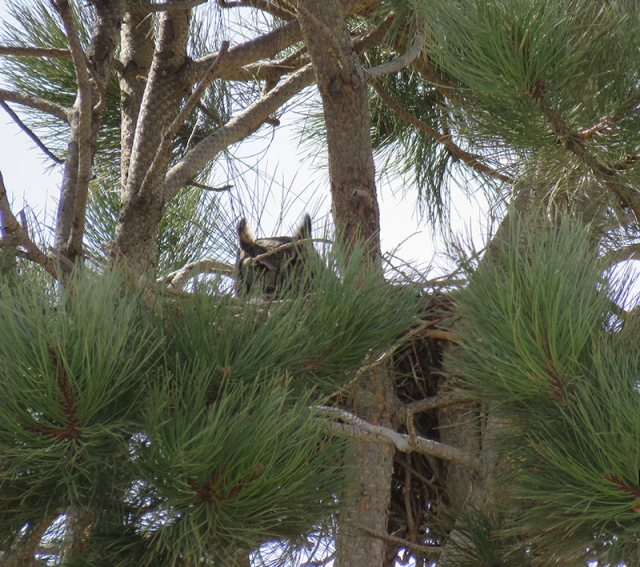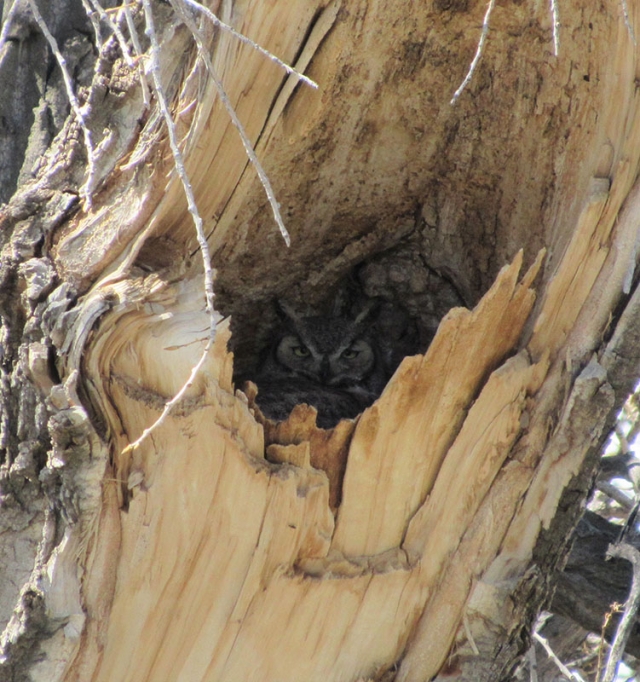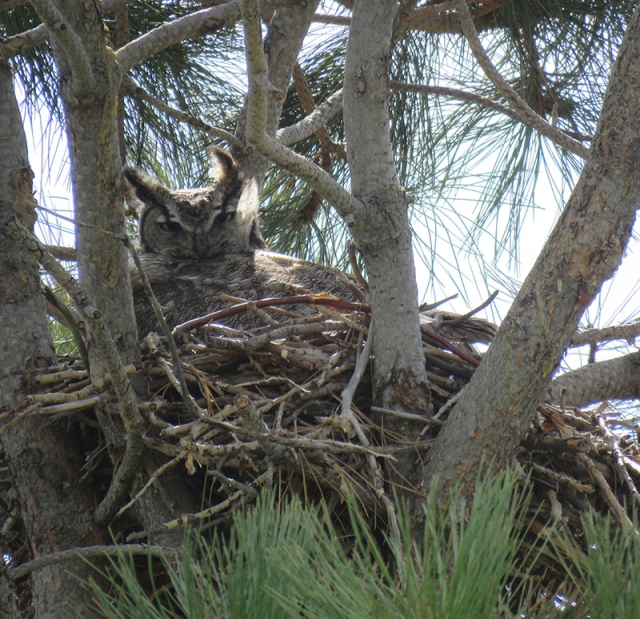It’s Hooting Season!
Great horned owls have been spotted at the Plains Conservation Center!
As days begin to lengthen, Colorado’s earliest nesters start to court each other. Most birds wouldn't think of breeding just as winter is starting, but great horned owls like to get busy early. One of the top predators of the sky, these owls dominate their territories under moon and starlight. The breeding season begins as early as the fall, when male owls are establishing territories. Then the courtship begins.
Courting starts with a period of intense hooting in late December and early January. Males hoot vigorously for up to six weeks in hopes that a female will be attracted to their calls. The answering hoots of females are heard for only about a week or two, toward the end of the six-week period. Eventually a female answers the voracious hoots and the two perform a courtship "dance." The dance includes lots of tail-bobbing, head jerking and deep calls. The courtship ritual concludes with copulation, accompanied with high pitched screeching and fast hooting that lasts 4-7 seconds. The pair copulates several times to increase the chances of fertilization.

Great horned owl pairs typically mate for life. To keep their bond strong, they perform hooting duets together throughout the night and during twilight. The duetting also indicates their territory to other owls in the area. Like a king and queen, they declare their union and assert their reign through distinctive songs that consist of low-pitched hoots.
Great horned owls do not create their own nests; instead they move into unoccupied real estate, like red-tailed hawk and raven nests. One of the advantages of being the earliest nesters is first pick—the early owl gets the nest. They also use cavities in live trees, dead snags, deserted buildings, cliff ledges and human-made platforms. After selecting a nesting site, the female lays between one and four round, white eggs. Incubation lasts for 30-37 days. Since owls begin nesting in winter, they can incubate eggs successfully when outside temperatures are below 27 degrees. The female does most of the incubating. Her mate watches over her and brings her food, but when she wants to hunt herself, he will take over incubation.

The hatchlings are born covered in white down with their eyes closed. The first couple of weeks are crucial to their survival. The young are unable to control their body temperature. One parent must always be present to transfer warmth from their bodies to the newborns; this process is called brooding, and it lasts for a month. At one month the owl chicks have dark down feathers that are warmer and provide better camouflage.
At four or five weeks old the chicks start to venture away from the nest, exploring the area around their birthplace. It isn’t until they reach 10 weeks of age that they start to take flight.
You may be wondering, why do these owls start nesting right when temperatures get frigid? Being the largest owls in Colorado requires extra development time. The entire process from courting to fledging takes several months to complete. Compare this to a songbird, like a robin, that only requires a month to complete the process. To ensure young owls have food as they begin to take flight, great horned owls start early, despite the temperature.

Great horned owls are truly a treat to see. Their large yellow eyes are sometimes the only visible feature when they are camouflaged against the trunk of a cottonwood tree. I recently experienced a pair flying directly over me and did not hear a single flap of their wings. The mystifying characteristics of great horned owls have influenced cultural folklore and mythologies from all over the world, and I can certainly see why. Keep your ears open during early mornings and late evenings while you are out on the trail, in a natural area or even in your neighborhood to catch the performance!
Interested in learning more about great horned owls? Join us for an owl walk or talk at an Aurora nature center near you!
Fendi Depres contributed this article and images. The Plains Conservation Center is an Aurora-based center that helps students and adults grow their knowledge and appreciation of the prairie ecosystem and the cultural history of Colorado through a variety of educational programs managed by Denver Botanic Gardens in cooperation with the City of Aurora.
Add new comment